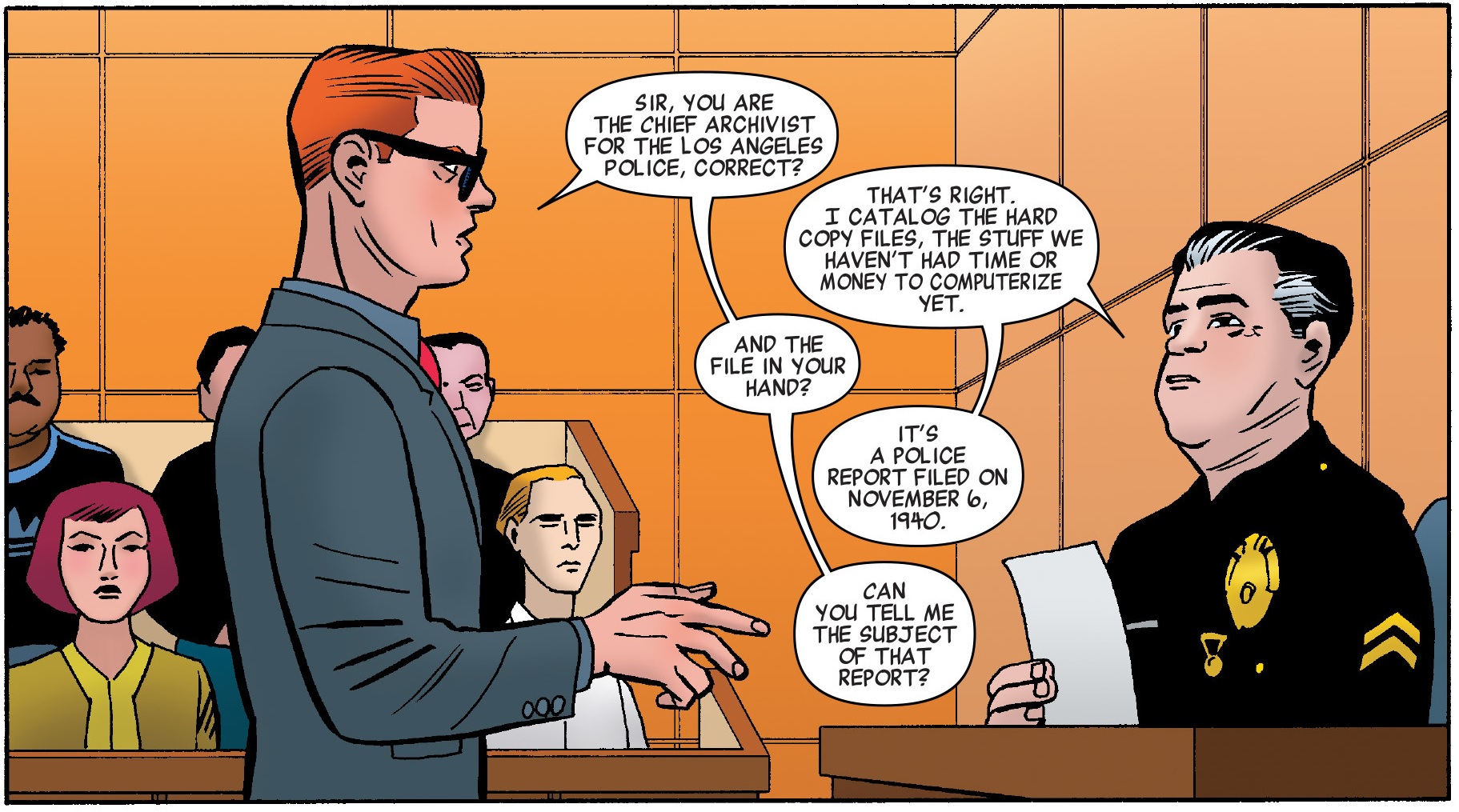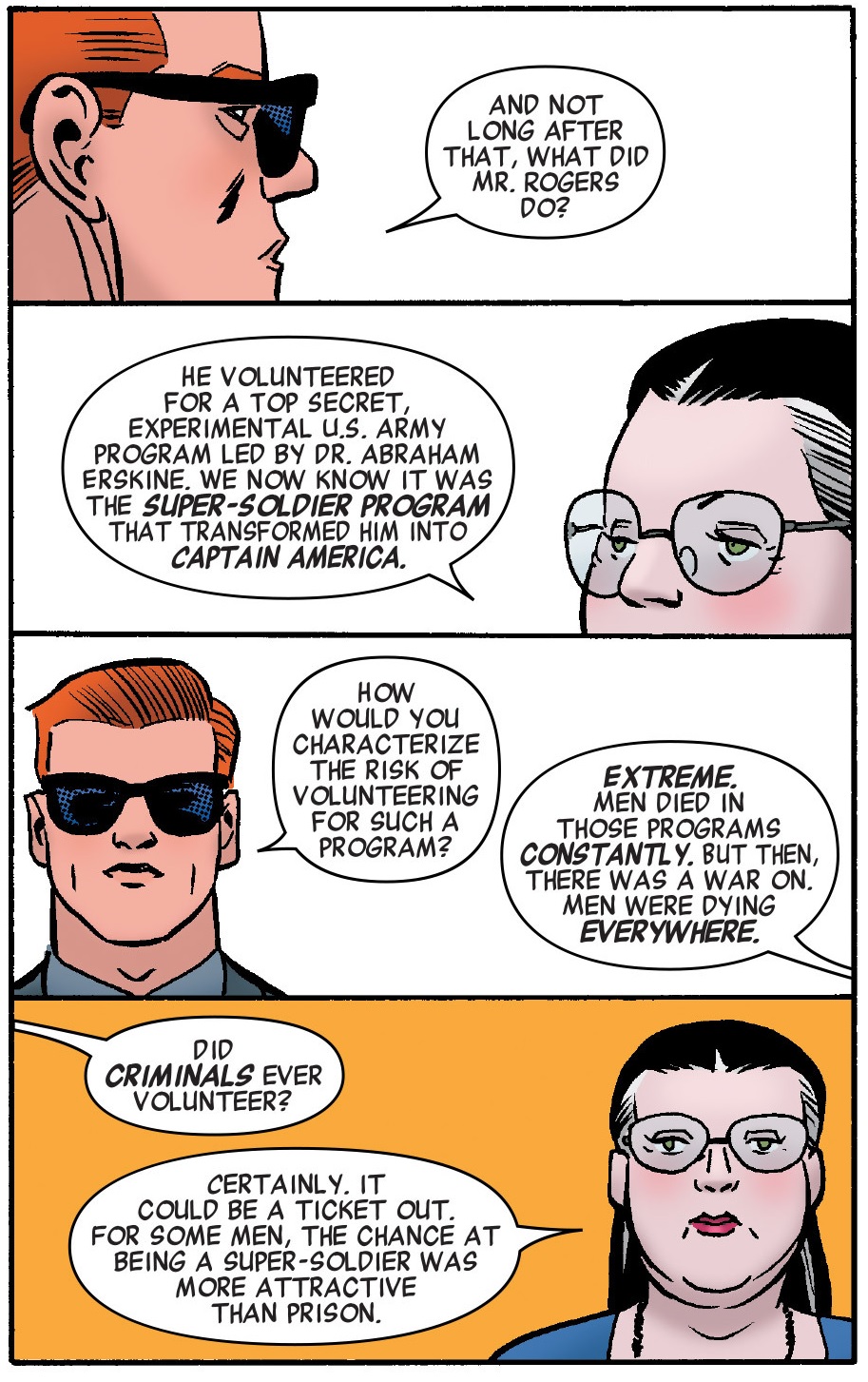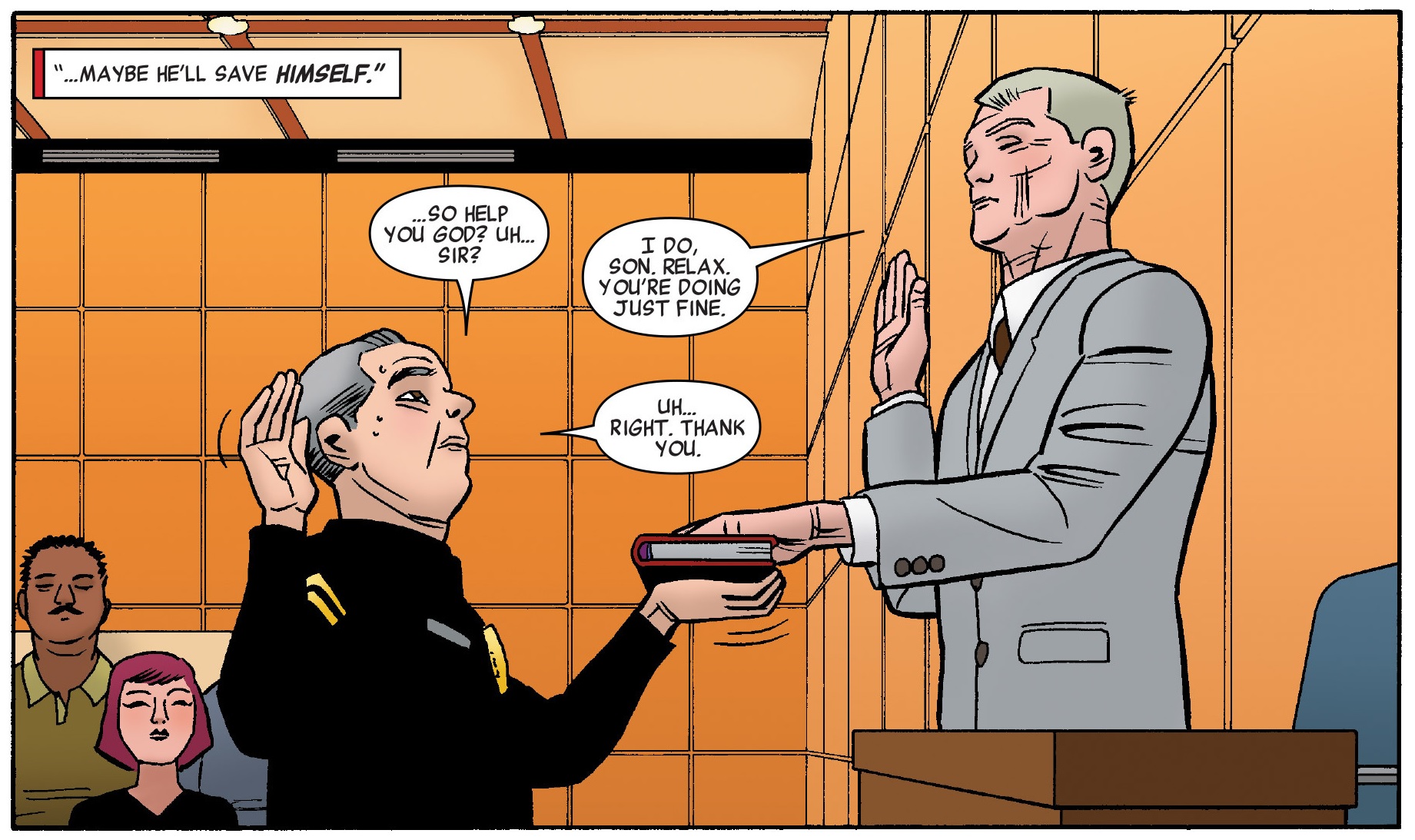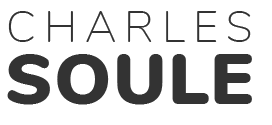12 Days of She-Hulk - Issue 9: "The Good Old Days, Part 2"
(Obligatory intro text paragraph - feel free to skip down to the non-italic text if you've already been reading these posts.) This is the ninth of twelve essays I'm writing, one per day as we lead up to the release of She-Hulk #12, the final issue in the current run of the title, on February 18. The idea is to look at each issue a bit more in-depth before we get to that last one. I'm doing these in conjunction with a live-tweet using the tag #12daysofshehulk on Twitter, also one per day leading up to the release of 12 starting at 7 PM EST - so you can play along at home! Feel free to @ me (I'm @charlessoule) - I'd love to hear what you think of this issue and all the others, whether it's a re-read or you're checking them out for the first time.
If you haven't read She-Hulk, but you'd like to, you can get the trade for issues 1-6 here, buy all the issues digitally here or hit up your local comic shop.
I've been pretty good about staying ahead on these posts - I usually type up each one a few days ahead of time and schedule it to auto-post at noon on the day in question. This one, however, I'm typing up on the fly, just a few hours before it goes live. If it feels like it has more urgency, that's why.
I knew this weekend would be tough timewise because it's a con weekend - I'm attending the Amazing Arizona Comic Con in Phoenix. Cons are awesome, but it can be all but impossible to get anything else done. Much like...
...when you're at trial! (That's a segue, folks.) Trial can be all-consuming. Most of my experience with it comes from time spent as a paralegal (or, as you may know it, an Angie Huang) before going to law school. I worked for a very large firm at that time, and they worked on gigantic corporate litigations. For those, you fly to the place where the trial is happening and live there for as long as it lasts, working out of a hotel or a satellite office. You're in the courtroom all day and you're preparing all night for the next day (more or less, depending on what's going on). Really grueling. You sort of have to, though, because, well, you have to win. You lose enough cases and you probably won't be a lawyer for all that long.
The experience of litigation can be very different depending on which level of the judicial system you're talking about, or area of law, but I chose to make the Steve Rogers case we look at in issues 8-10 a real meatgrinder. In issue 9, we start to see more of what Cap is actually being accused of, through "dying declaration" testimony from a childhood acquaintance of Steve's. I heard from some attorneys on this one - the way I use dying declaration here maybe isn't the way it's always used in California, but I based it on Rule 804(b)(2) in the Federal Rules of Evidence, which states that a witness statement relayed to someone else just prior to death can be admissible in court if it is:
(2) Statement Under the Belief of Imminent Death. In a prosecution for homicide or in a civil case, a statement that the declarant, while believing the declarant’s death to be imminent, made about its cause or circumstances.
I always thought that was a fascinating rule - I mean, like people can't lie when they think they're about to die? It seems very based in what the framers of that law believed about human nature - or wanted to be true. This rule comes from the "common law," which is a set of laws or rules that existed before law was formally codified - almost like very binding rules of thumb that society (especially English society, since that's where much of our legal system comes from) used to handle disputes.
 As an aside, poor Javier, right? I gave him so much text to handle in this arc, and he worked with it beautifully. The chase scene at the end of this issue was included specifically to give him a bit of action to draw, considering that so much of the rest was talking heads.
As an aside, poor Javier, right? I gave him so much text to handle in this arc, and he worked with it beautifully. The chase scene at the end of this issue was included specifically to give him a bit of action to draw, considering that so much of the rest was talking heads.
Now, as far as the actual substance of this dying declaration - we hear that just before the US entered World War II Steve Rogers apparently antagonized a criminal into killing the older brother of the declarant. It doesn't sound good for Steve, but it seems like it could be plausible. That was the key.
 You'll note in this sequence that it's written in the "voice" of Harold Fogler, the dead guy, even though it's supposedly being relayed by the policeman who heard the testimony back in the hospital. The captions here aren't the way the court heard it, exactly - but I felt that adding a lot of "and then Harold said this..." would have taken a lot of the immediacy out of the scene. I thought it was important to get Harold's voice here, to convey his pain about what happened back in that LA warehouse.
You'll note in this sequence that it's written in the "voice" of Harold Fogler, the dead guy, even though it's supposedly being relayed by the policeman who heard the testimony back in the hospital. The captions here aren't the way the court heard it, exactly - but I felt that adding a lot of "and then Harold said this..." would have taken a lot of the immediacy out of the scene. I thought it was important to get Harold's voice here, to convey his pain about what happened back in that LA warehouse.
Once we get the testimony, Matt Murdoch begins to build his case.
 That date, November 6, 1940, was settled upon because there was actually a very tiny window, both historically and in Marvel U history, for this story to happen. We actually know pretty much exactly when Steve signed up for Project Rebirth - the program that ended up with him getting the super-soldier serum and becoming Captain America. We also know when the US entered the war, and, more importantly, when the draft was imposed (the law was approved on September 16, 1940, and it went into effect a month later.) We know from Cap's lore that he tried to volunteer for the Army but was classified 4-F (unfit for service), which was something that was part of the draft rules. We also know that Captain America #1 hit shelves on December 20, 1940.
That date, November 6, 1940, was settled upon because there was actually a very tiny window, both historically and in Marvel U history, for this story to happen. We actually know pretty much exactly when Steve signed up for Project Rebirth - the program that ended up with him getting the super-soldier serum and becoming Captain America. We also know when the US entered the war, and, more importantly, when the draft was imposed (the law was approved on September 16, 1940, and it went into effect a month later.) We know from Cap's lore that he tried to volunteer for the Army but was classified 4-F (unfit for service), which was something that was part of the draft rules. We also know that Captain America #1 hit shelves on December 20, 1940.
So, this story had to take place between October 16, 1940 and December 20, 1940, and probably on the early side, to give Cap time to get back to Brooklyn, volunteer, be classified 4-F, and then get into the super-soldier program. A pretty tight window. However, it worked really well for this story because it supported the idea that Cap could be guilty - as you see, Murdoch is trying to build up the idea that Steve Rogers was so desperate to get into the Army because it could be a safe haven for him from the criminal consequences of causing the death in LA.
 There's another reason that the dates here worked out so nicely, but we'll get into that with Issue 10 tomorrow.
There's another reason that the dates here worked out so nicely, but we'll get into that with Issue 10 tomorrow.
Jen does what she can to tear down Murdoch's case, but he's pretty surgical about it - which is in keeping with his character. He's supposed to be brutally effective, and he needs to be, otherwise Jen isn't in "danger," and the story's boring. We need, as readers, to really think that this might not work out for Cap. Jen certainly feels that way.
 But don't worry, Jen, you'll get your chance tomorrow!
But don't worry, Jen, you'll get your chance tomorrow!
Favorite panel - there were a ton of possibilities here. The chase sequence across NYC (in which, you'll note, Jen is wearing a Cap-branded pajama top and purple pants - both a nod to her Hulky roots and support for her client), something from the flashback sequence, that great split panel on the last page... but I think it's this one:
 Javier did such a lovely job here conveying the nervousness of the bailiff at the very idea that he has to swear in Captain America as a witness. Note the little trembles in his upraised hand and on the bible, and Steve's comparably rock-steady hand. The fact that Steve Rogers casts an incredibly long shadow is a central part of this case, and this beat really supports that.
Javier did such a lovely job here conveying the nervousness of the bailiff at the very idea that he has to swear in Captain America as a witness. Note the little trembles in his upraised hand and on the bible, and Steve's comparably rock-steady hand. The fact that Steve Rogers casts an incredibly long shadow is a central part of this case, and this beat really supports that.
Favorite character: Daredevil. I love writing that guy, and I got to do much more with him here than I did in his prior appearance in Issue 4. Super fun.
 (Also, look at the colors in that bit, especially those silhouettes in the second panel. Muntsa Vicente is brilliant.)
(Also, look at the colors in that bit, especially those silhouettes in the second panel. Muntsa Vicente is brilliant.)
Tomorrow, the conclusion of the case! Wow, we're really getting close to Wednesday, aren't we?
If you have questions about this issue, or anything at all, you can reach me on Twitter (www.twitter.com/charlessoule) or via the email form at www.charlessoule.com.
